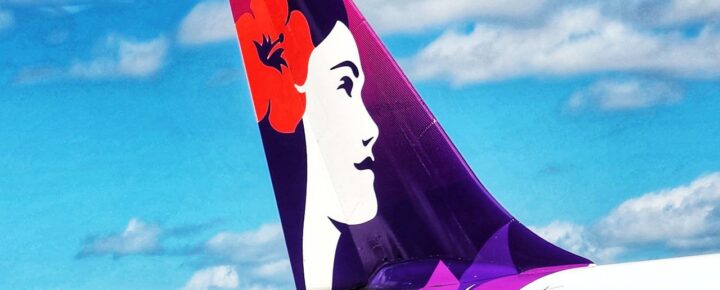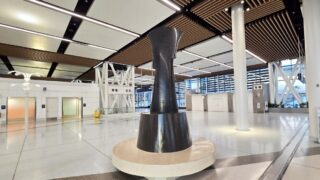Hawaiian Airlines is embarking on a pivotal step in its operational alignment with parent company Alaska Airlines by relocating its first base, this one at San Francisco International Airport. The airport announced that effective “December 4, 2024, Hawaiian Airlines moves operations to Harvey Milk Terminal 1, including check-in, security, and baggage claim.”


This move marks the beginning of a much broader, year-long strategy to streamline and integrate the two airlines’ operations. Over time, it will have more significant implications for Hawaii travelers.
What this move means for all Hawaii-bound travelers.
The relocation offers an upgraded and more efficient travel experience for Hawaiian Airlines passengers. Harvey Milk Terminal 1, now Alaska Airlines’ premiere base at SFO, has recently received substantial upgrades. It features well-reviewed and up-gauged amenities, including higher-end food options (no major fast food), automated bag drops, and self-service technologies, among other things.
Hawaiian travelers will now benefit from these enhancements and the convenience of entirely co-located operations with Alaska Airlines. This marks the first time the two companies have joined this way, but it certainly will not be the last.
The terminal move also simplifies connections between Hawaiian and Alaska flights, an advantage for passengers relying on both airlines for travel needs. While Hawaiian and Alaska will maintain separate flight operations until they receive their single operating certificate later in 2025, sharing the same terminal fosters easier transfers and more seamless travel experiences.
A coordinated strategy unfolds.
The move at SFO is the first of other planned relocations at major mainland airports, including the much-needed Los Angeles (LAX) changeover, where Hawaiian has long suffered due to its position in the Tom Bradley International Terminal (TBIT).


At TBIT, passengers often face long and inconvenient walks between check-in, gates, and baggage claim—a pain point that has frustrated travelers for years. We’ve received hundreds of comments about Hawaiian’s LAX problem.
An upcoming relocation at LAX aims to address these challenges by co-locating Hawaiian’s operations with Alaska Airlines, potentially within Terminal 6. This move is expected to improve passenger flow, significantly reduce transit times within the airport, and enhance the overall traveler experience.
For Hawaiian Airlines, resolving these inefficiencies at LAX will represent a key milestone in its alignment with Alaska Airlines and an opportunity to elevate its reputation at what has long been its busiest mainland hub.
Other mainland cities are expected to undergo the same combination that is starting in San Francisco tomorrow. Hawaiian’s integration into these shared spaces with Alaska Airlines reflects Alaska’s long-term vision to align operations while still maintaining the separate identities of both airlines.
This alignment is set to improve the passenger experience and optimize the resources of both carriers, including shared facilities from check-in and beyond. Although Hawaiian and Alaska will continue to use separate systems for now, plans for future integration are on the horizon and can’t come too soon for Hawaiian Airlines customers.
Alaska’s grows dominant at SFO.
Alaska Airlines, already the second-largest carrier at SFO and a dominant force at Harvey Milk Terminal 1, has established the terminal as its hub of efficiency and connectivity. Its operations from there span domestic and international routes and help solidify Alaska as a key player for all West Coast travelers. Hawaiian Airlines’ move into Terminal 1 adds its unique island flair to this already busy terminal.
What’s next for Hawaiian and Alaska Airlines?
As Hawaiian Airlines takes this first physical step to align with Alaska Airlines, the Hawaii travel community will see how the two disparate companies, each with long legacies, will come together. Will this partnership result in improved service and connectivity or begin to diffuse the distinction of Hawaiian’s brand?
We welcome your comments.
Get Breaking Hawaii Travel News







IMO sounds like half of the employees needed. Half of the cost of leasing two terminals and gates. Phasing out HA points and credit card customers. Converting all customers to Alaska only credit card customers and Alaska point systems. I guess we will find out the real truth when all the HA airplanes reach the end of life period. What is the penalty for a company to drop a service or product from it’s product line? Nothing. Maybe a small slap of the hand.
Having worked for Alaska at LAX, I don’t see how moving HA aircraft to T6 will work due to the limited space on the south side of the airfield. The terminals were never built to accommodate the larger aircraft (A330, B787). HA used to operate out of T5 which had a few wide body gates available. Should be interesting
Hallelujah! Hawaiian getting out of the “unwanted step-child gates” at the Tom Bradley Terminal at LAX is a welcome to us! While the walk TO the planes has never really bothered me since it is the beginning of a 5 hour journey, the walk to get to baggage claim on return is all but cruel and unusual punishment. We have done it enough that we no longer get lost but I feel for the people returning to LAX after their first Hawaiian trip! Next up, Please, Please, get the website and app updated to 2024 standards!
You nailed the essence of the merger Jim….. The upgrades to the overall travel experience by cherry picking the best from each operation and Alaska’s outstanding website is what will fuel the future growth! Obviously this is just the beginning but it’s going to be fun watching how this evolves.
They sure know how to cherry pick when it’s in their interest but leave the customer hanging when it’s not. Try using a Hawaiian travel credit on an Alaska code share flight and see how far you get. For this and other reasons when I use up my miles these two (not one) carriers go to the bottom of my list.
The article sounds like a press release from marketing. “Joint operations”? You mean “combined operations” ?
It saves money, and it was and always will be the inevitable byproduct of “mergers” and corporate buy outs. It also means more layoffs and fewer employees at the SFO “combined base” … good people lose their jobs. I don’t like it, but understand it, and I’ve B-T-D-T. The cycle never ends in the airline industry or any other, for that matter.
The article says: “This marks the first time … but it certainly will not be the last.”
Believe it.
You might want to look up what “dominant” means.
Alaska Airlines has barely a 13% market share and the addition of Hawaiian Airlines to that is inconsequential.
United Airlines has just shy of a 50% market share.
They meant dominant in the Hawaii market…Alaska/Hawaiian is the dominant airline serving Hawaii.…before the merger Hawaiian by itself had the most flights to Hawaii from the mainland. This article is a good example of the synergies of the merger starting to be realized.
Dickie, we’ll have to disagree. I’m saying this is going to be the rare merger that will ultimately create jobs. The Alaska/Hawaiian combination will be a strong marketing coup creating the growth Alaska was seeking when they bought HA.
It’s okay to have disagreements among gentlemen, so yeah, we’ll just have to “agree to disagree” on this one.
I’ve been through or had a “near-miss” with 4 “mergers/acquisitions” in the airline industry and saw more that made one’s eyes get big. Not one created more jobs in the near-term, say over 5-10 years, but they did create furloughs, pay cuts, and seat/base displacements when one can least afford it.
Example: Delta-Northwest saw 12,500 pilots at the “2008 merge”, then “lost” nearly 2000 pilots – didn’t recover those seats ’til 2014.
Some airlines ultimately went belly-up as it was a bad “marriage” from the get-go and the industry was seeing many $$$ downward death-spiral pressures.
So I’ll concede sometimes more jobs long-term, but “more jobs” when it counts and hits one’s own pocketbook … naah. Stay safe, Bruddah’ ..
Fair enough, it will be interesting to watch from the sidelines. We both rode the most tumultuous era in the history of the airlines, I started when PanAm was too big to fail, Braniff was one of the most profitable and Allegheny/Mohawk was the most recent merger….it was the gold seal of how to properly merge in a fair manner! That said, with all the ups and downs (no pun intended!), I wouldn’t change a thing!
Roger that; I agree …
Hired by 4 during the Oil Embargo … spent 5 days with PSA (a.k.a. “Poor Sailor Airline” and a USN Flying Club at the time) … 4 years at Braniff as it was such a sweet deal … ouch !! … closed it all out with 25 years at “Cobra Airlines” (“we’ll strike at anything”, a.k.a. Northwest Orient Airlines) while part of the Seattle and Honolulu bases … and now I’m retired Delta whether I like it or not …
And you can be my Wingman anyway, anyday, Maverick … (smiles)
Stay safe and always check your “6”, Bruddah’
I’m curious where your 50% number comes from? Here’s UAL’s busiest route….
“Data shows that United has nearly 70,000 seats available on an average of three daily flights between LAX and HNL as it deploys Boeing 777-200 and 757-300 aircraft on the route. Hawaiian Airlines is not far behind United and has about 56,000 seats available, but it also serves nearby Long Beach Airport, where it has over 10,000 seats this month”….
That’s in the summer, they cut back more than HA does in the winter, and of course HA serves many other cities that UA doesn’t serve at all. I believe the 50% number you are thinking is what the anti merger folks complained about because HA/AS was going to end up with 50% of the market?